Remote Sensing based prediction of forest attributes
Loïc Dutrieux, 2015-10-20
ROBIN science meeting, Brussels
Julian Equihua, Lammert Kooistra, Martin Herold, Mariso Toledo, Nataly Ascarunz, Gerbert Roerink, Marielos Peña-Claros, Lourens Poorter
Why do we need maps of forest attributes?
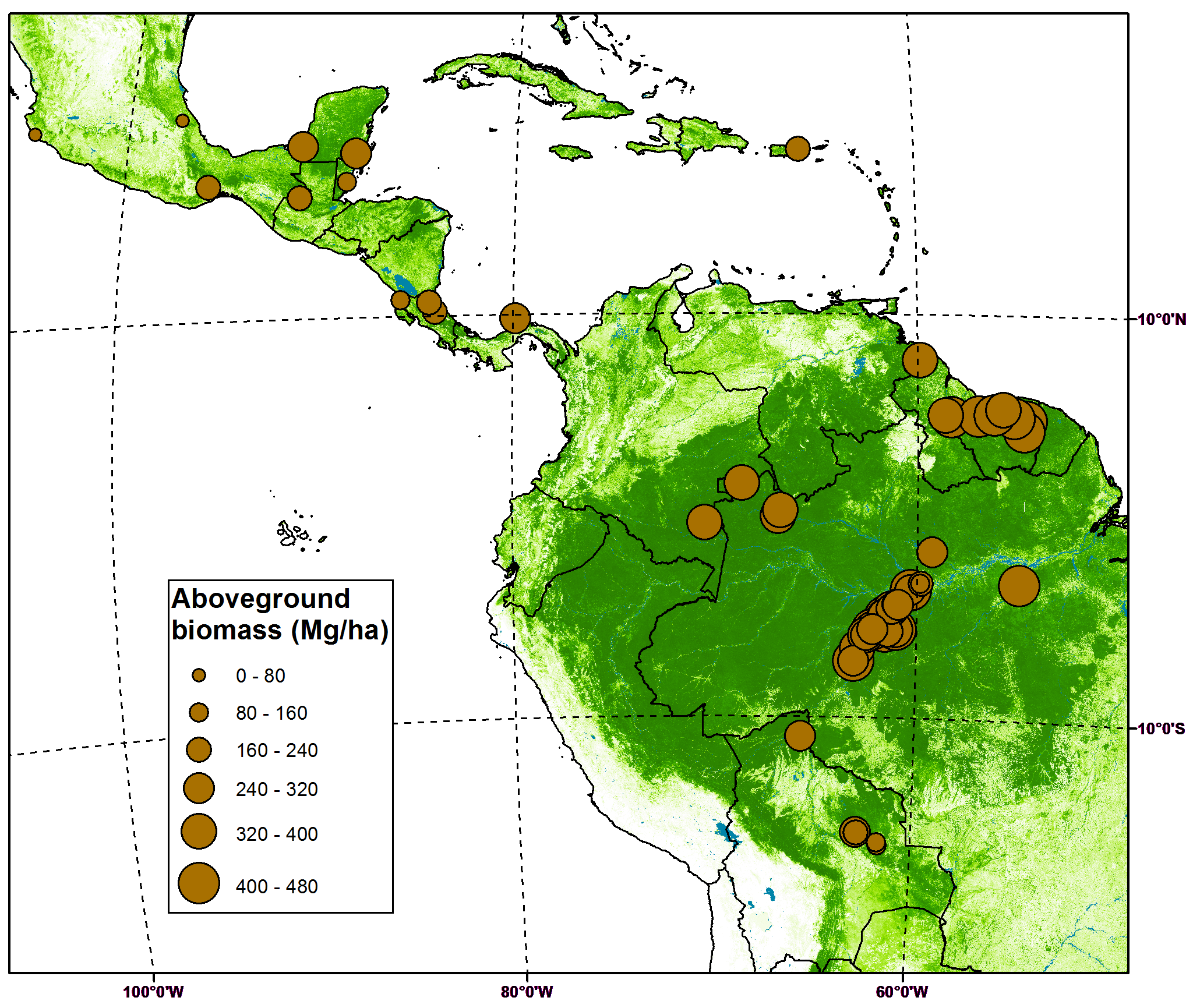
Is that sufficient to:
- Find spatial patterns ?
- Design region specific policy actions ?
- Lacks spatial details
- Spatially discrete
- Costly to acquire
Limitations
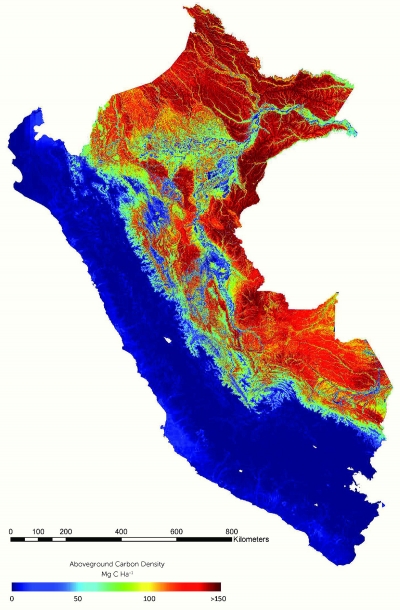
Asner, Gregory P., et al. "High-resolution forest carbon stocks and emissions in the Amazon." Proceedings of the National Academy of Sciences 107.38 (2010): 16738-16742.
The Remote Sensing scaling recipe
Take
- 220 in-situ forest sites
- 28 remote sensing preditors
- A random forest model
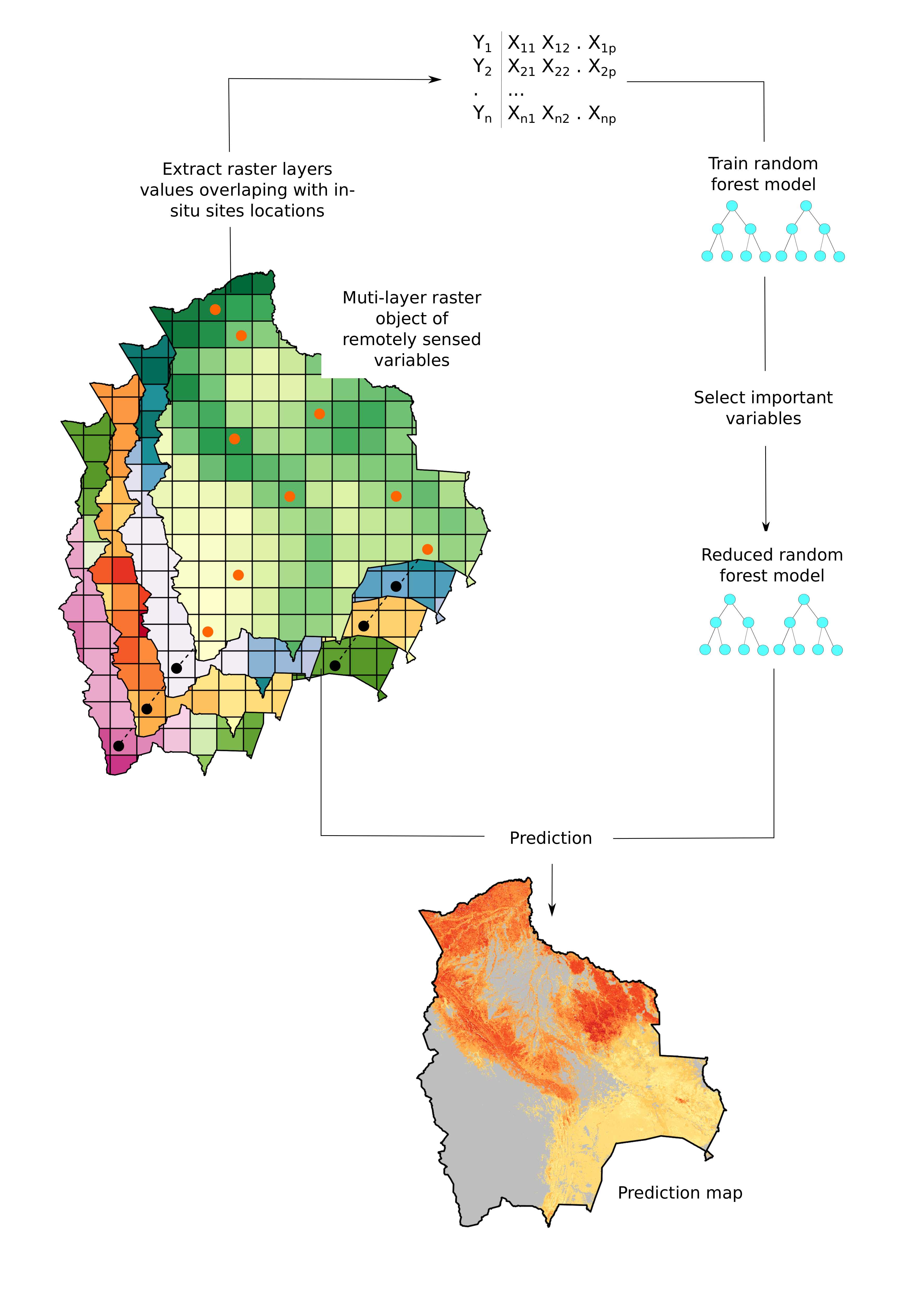
-
Step by step:
- Select study site
- Select and prepare remote sensing layers
- Extract remote sensing variables for every in-situ location
- Train random forest model
- Select most important predictors
- Predict
Study site
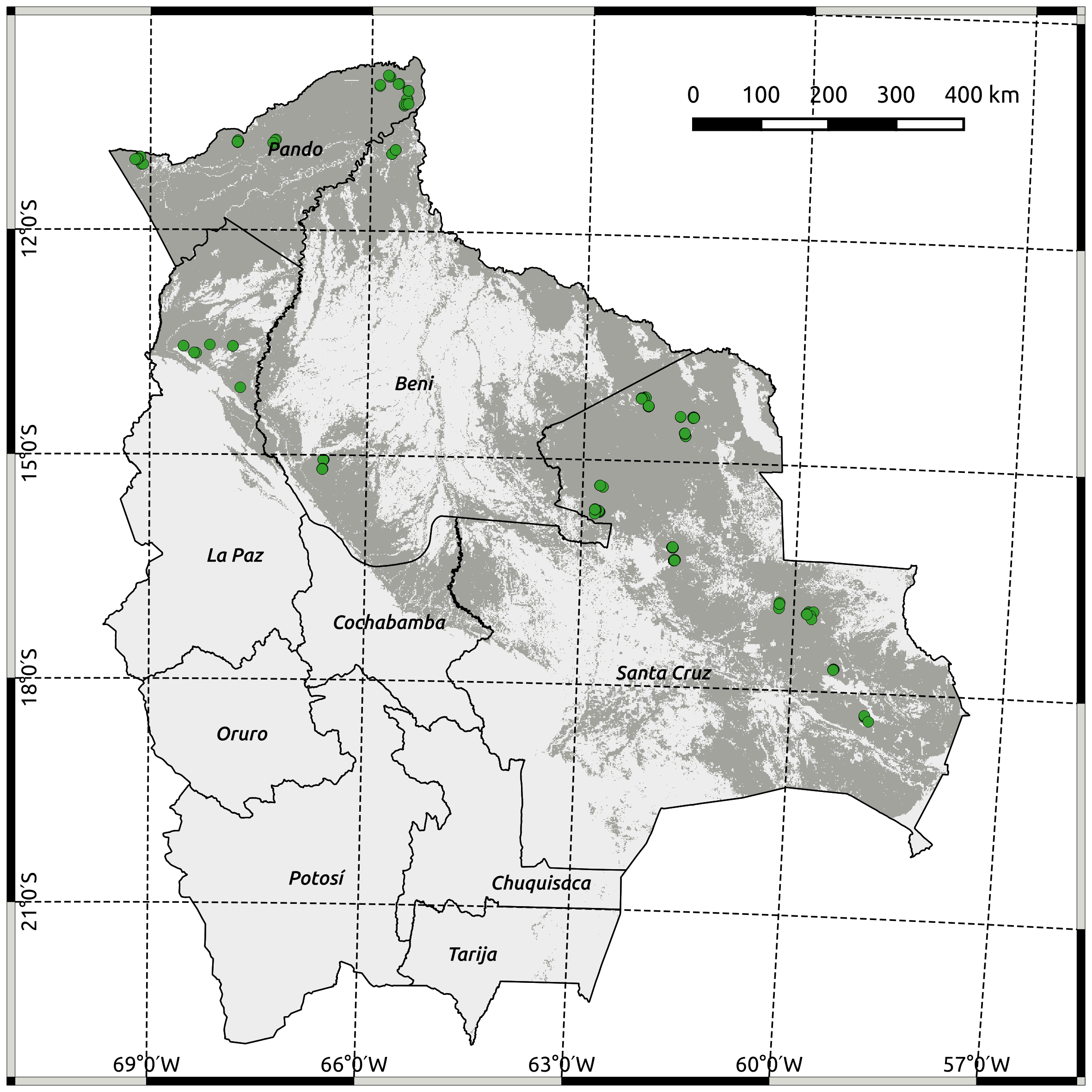
In-situ variables
(The variables we'll try to predict)
| Variable | Category |
|---|---|
| Species composition (First two DCA* axes) | Floristic |
| Species richness | Floristic |
| Emergent density | Functional group |
| Liana infestation | Functional group |
| Palm density | Functional group |
| Mean DBH | Structure |
| Tree density | Structure |
| Basal area | Structure |
*Detrended Correspondence Analysis (DCA) summarizes species count for every site into a score.
Toledo, 2010. Neotropical lowland forests along environmental gradients
Remote sensing predictors
A set of ecologically relevant variables
- Moderate resolution datasets (1km²)
- A lot of them derived from MODIS
- Available globally
Remote sensing predictors
| Variable | Expected contribution | Number of predictors |
|---|---|---|
| Surface reflectance | Leaf chemistry | 14 |
| LAI | Foliage structure | 1 |
| Tree height | Vertical structure | 1 |
| NPP | Productivity | 1 |
| Phenology (HANTS) | Intra-annual dynamics | 5 |
| Terrain metrics | Topographic conditions | 4 |
| Cannopy clumping | Canopy structure | 1 |
| Tree cover | Forest density | 1 |
Data extraction
Data extraction - considerations of scale
- We assume sub-pixel spatial homogeneity
- Spatial aggregation required due to clustering of in-situ sites
- 104 calibration points after aggregation
Random forest ?
What is random forest?
- An ensemble learning method
- Builds multiple regression trees
- Good prediction performances
- Relatively interpretable (variable importance)
- Quite insensitive to potentially irrelevant predictors
- Well suited to such exploratory data mining approaches
- It's pure coincidence we're using it to predict forest attributes
Results
Modelling performances assessment
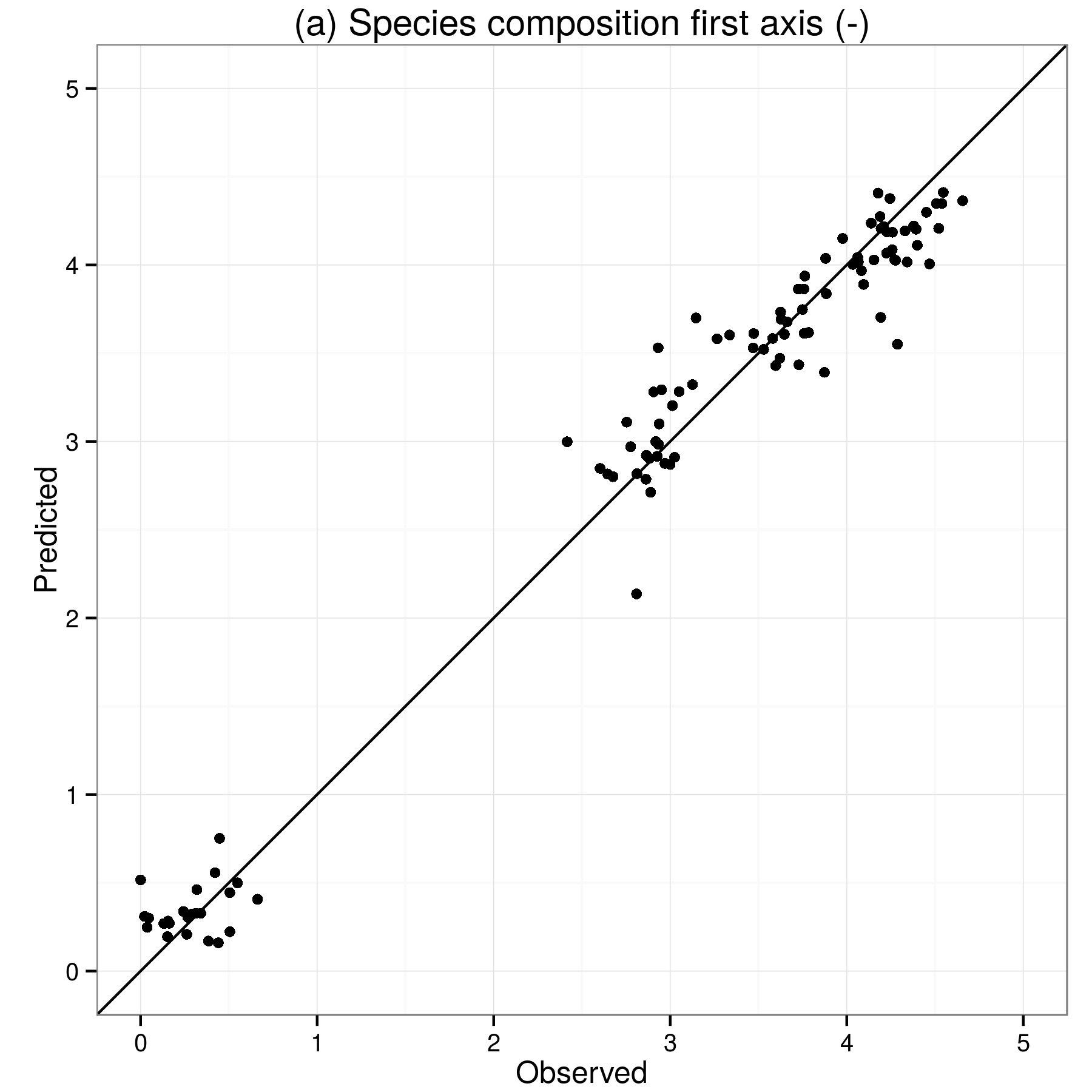
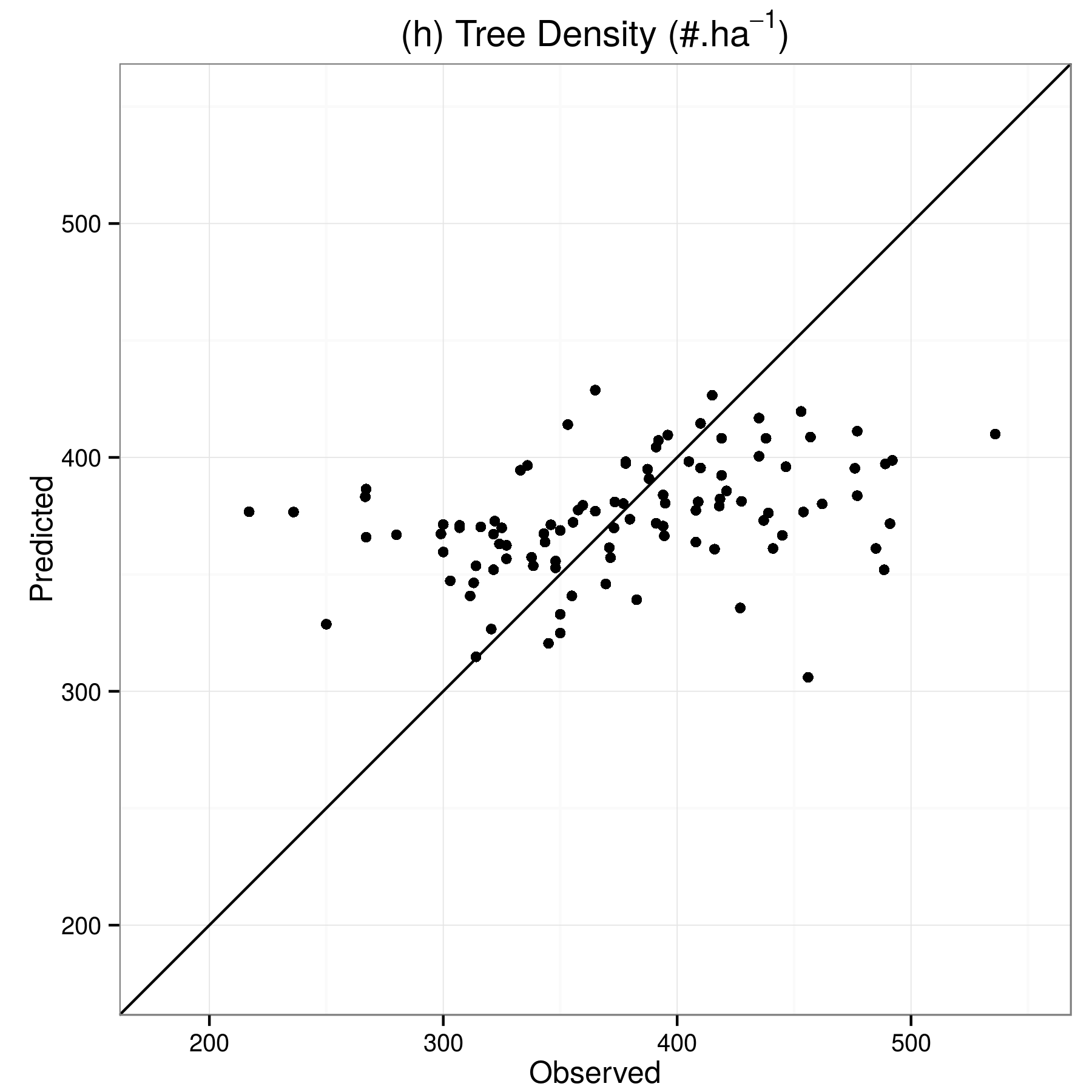
Summary of variables remote sensing potential
| Variable | Category |
|---|---|
| Species composition (First two DCA* axes) | Floristic |
| Species richness | Floristic |
| Emergent density | Functional group |
| Liana infestation | Functional group |
| Palm density | Functional group |
| Mean DBH | Structure |
| Tree density | Structure |
| Basal area | Structure |
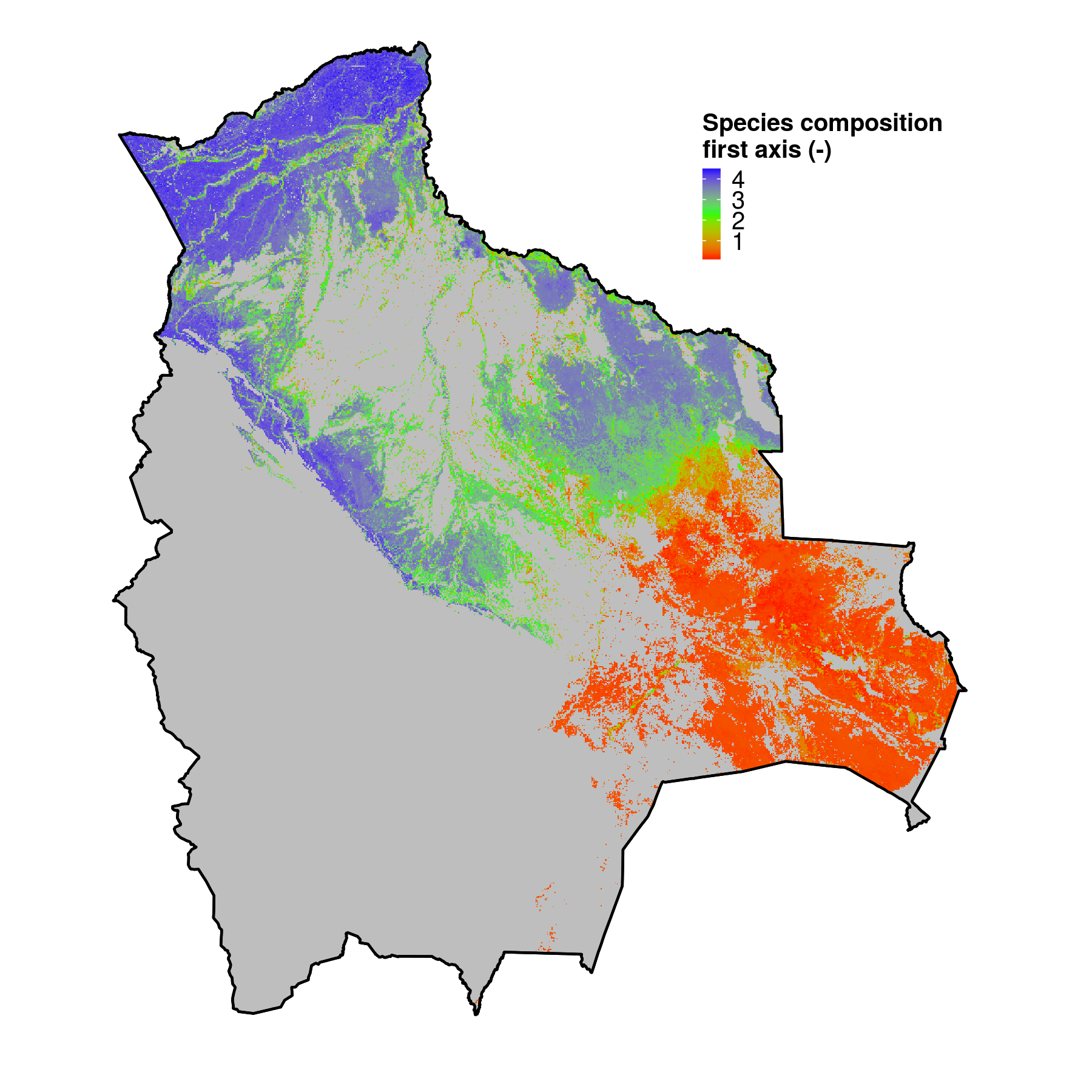
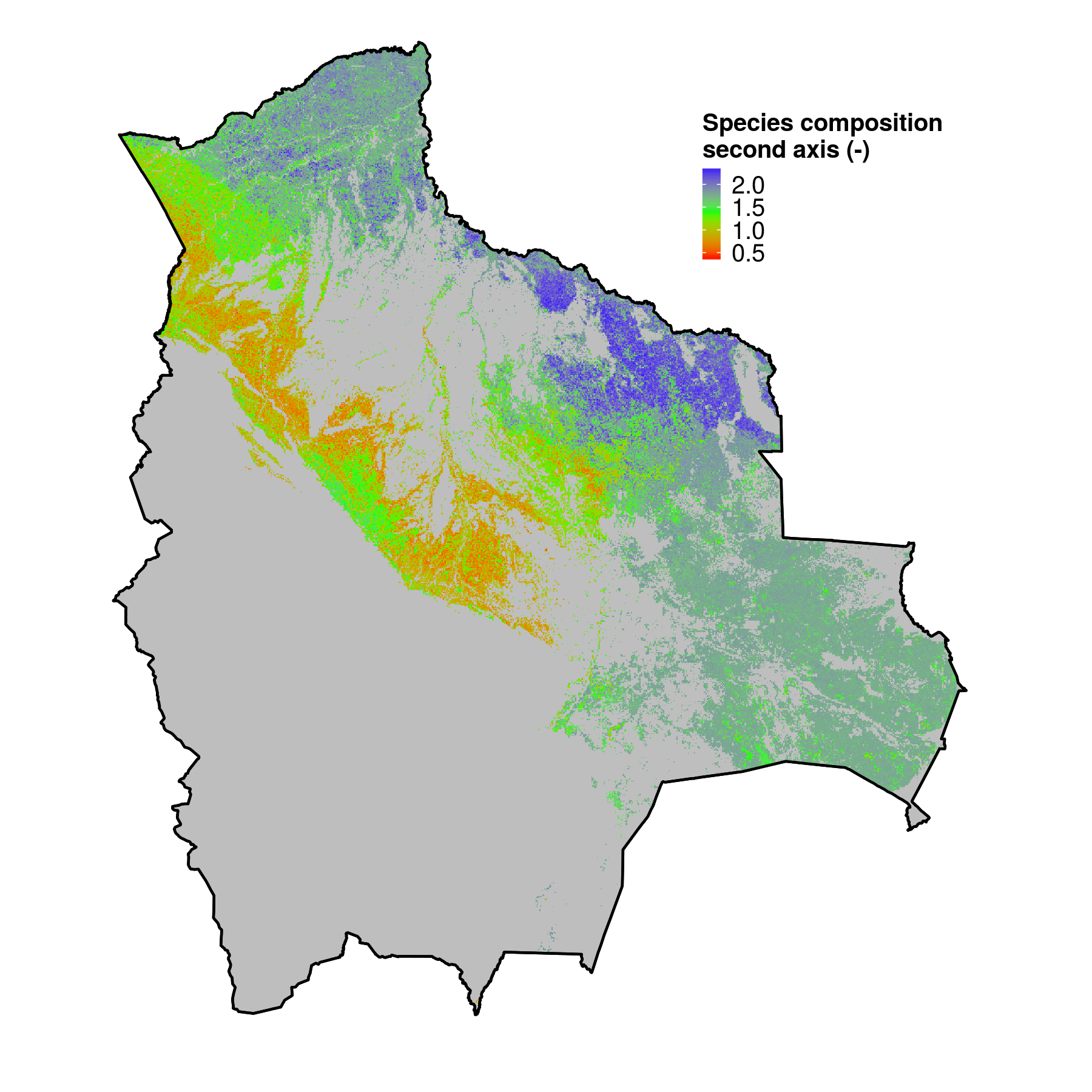
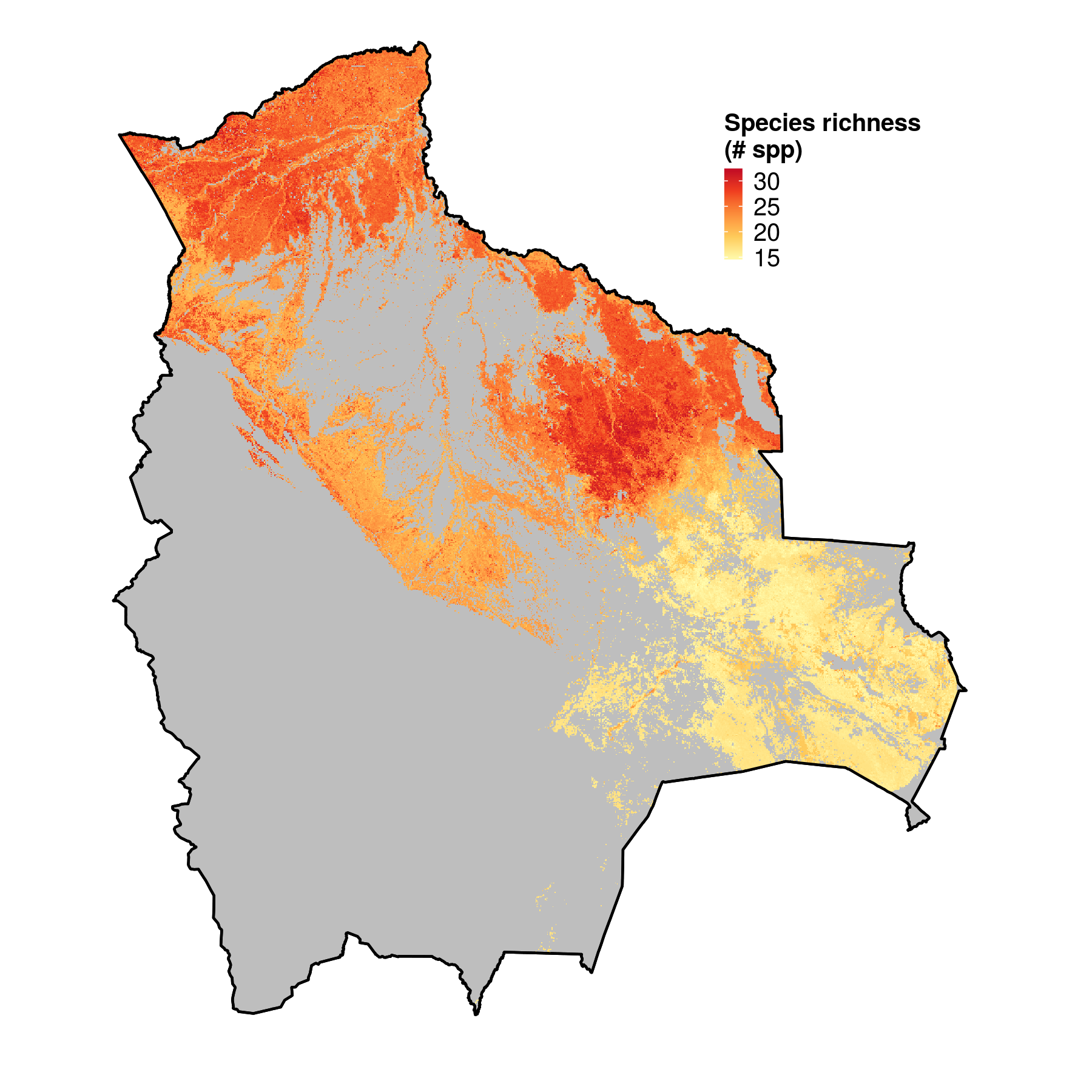
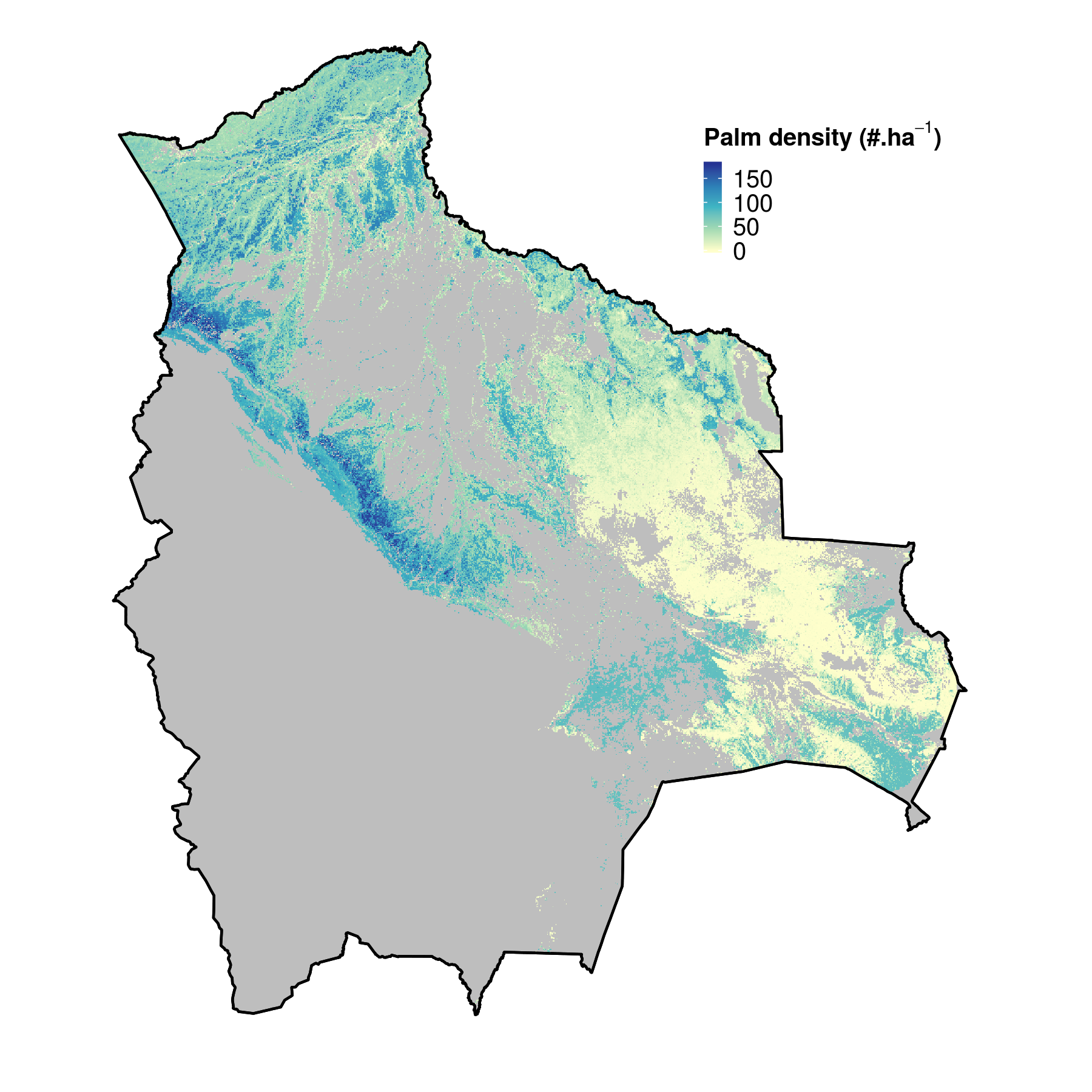
What now?
We have spatially continuous information on floristic properties at 1km resolution, what can we do with it?
Does species diversity matter for biomass?
According to this correlation map:
It depends where !
Avitabile V., Herold M., Heuvelink G., Lewis S.L., Phillips O.L., Asner G. P. et al., 2015. An integrated pan-tropical biomass maps using multiple reference datasets. Global Change Biology (in review)
Metzger, Marc J., et al. "A high‐resolution bioclimate map of the world: a unifying framework for global biodiversity research and monitoring." Global Ecology and Biogeography
Wrapping up - Conclusions - What have we learnt?
 We can predict biodiversity using remote sensing (Using a relatively simple approach)
We can predict biodiversity using remote sensing (Using a relatively simple approach)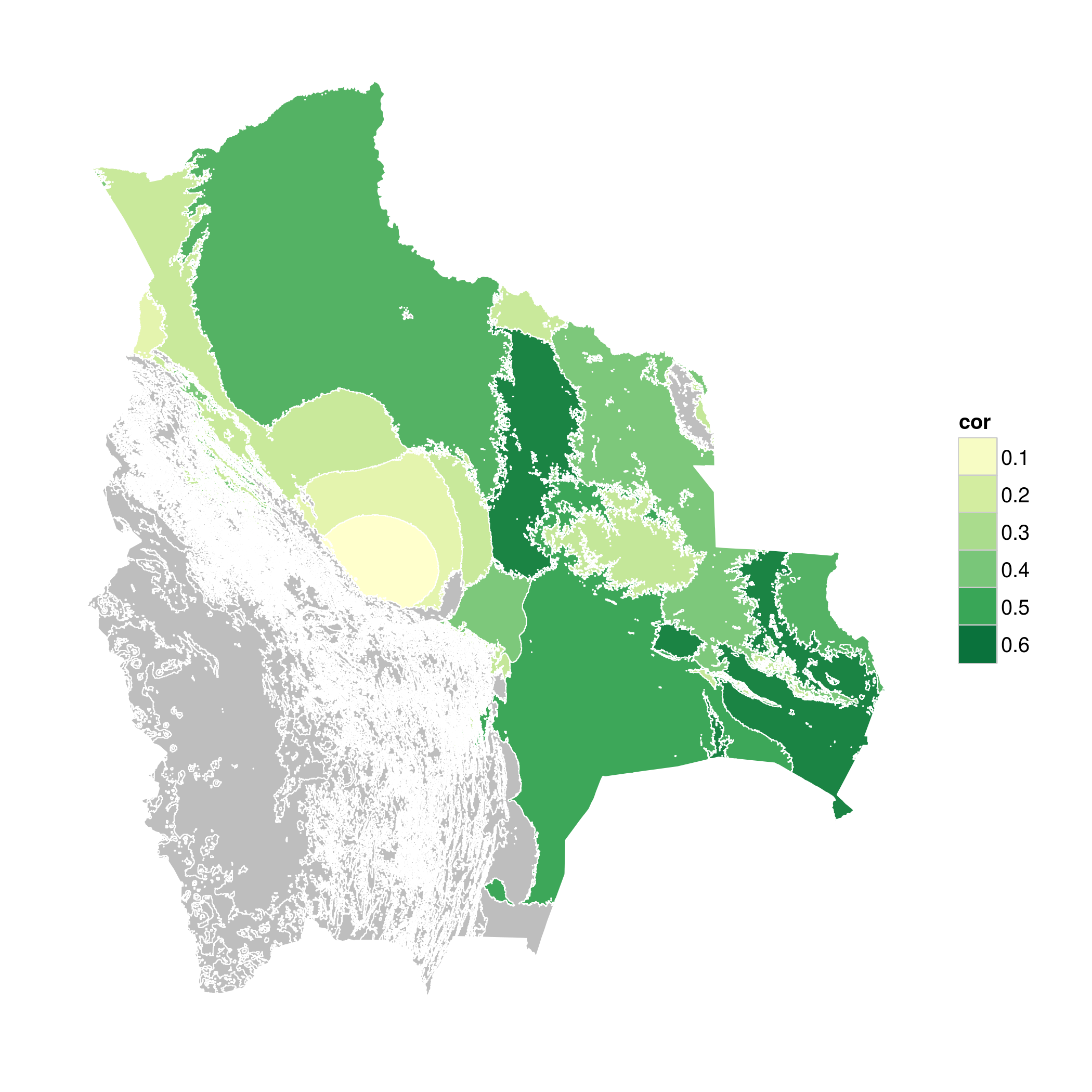 These maps can be used to understand relations spatially. (But we needs to think of how to use them to their full potential)
These maps can be used to understand relations spatially. (But we needs to think of how to use them to their full potential) Potential to scale structural attributes of forests is limited
Potential to scale structural attributes of forests is limitedBut some future technological improvements are expected (GEDI, biomass satellite)